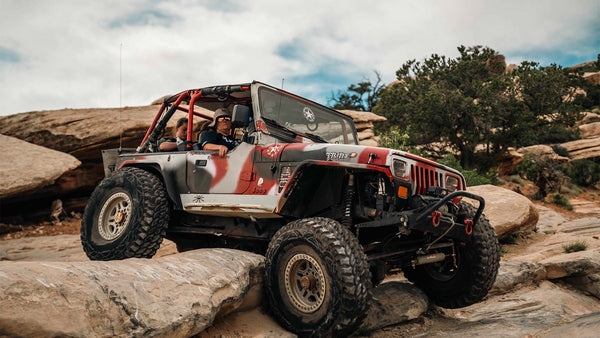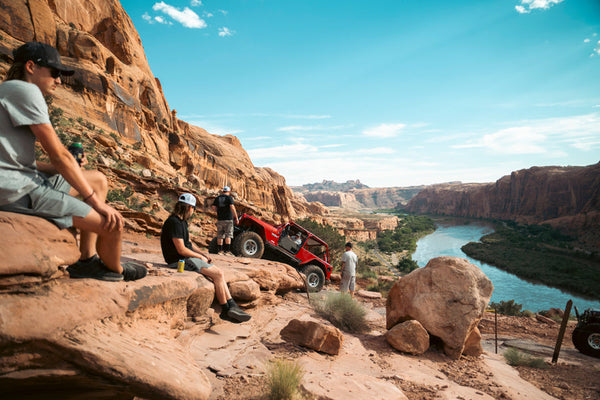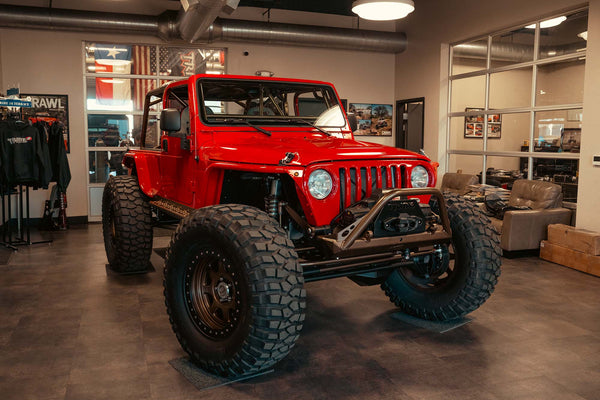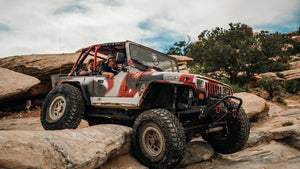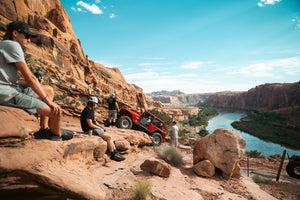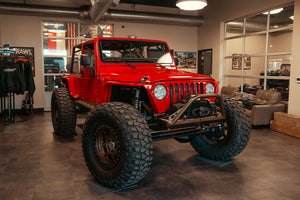Built Over Time: Jason Tout’s Jeep YJ Is a Budget Rock Crawler Done Right

Budget Build for the DIY Builder
When you see a fully-built rock crawler on the trail, it’s easy to assume it came together all at once, backed by a bottomless budget. But that’s not the story here.
This Jeep YJ belongs to Jason Tout, a longtime off-road enthusiast and key part of the Tribe-16 crew. It’s the product of years of trial, error, upgrades, and creativity—done piece by piece, paycheck by paycheck. It's not just a crawler; it’s a blueprint for what you can accomplish over time with smart choices and a clear vision.
Here’s a breakdown of the key components that make this build both capable and cost-conscious, plus how Jason pulled it all together without going all-in at once.
Building in Stages — and Owning the Process
Jason’s approach is a reminder that not every rig needs to be built overnight. Some upgrades happened early. Others were delayed, done secondhand, or pieced together with a bit of fabrication and ingenuity.
The back-half kit, for example, wasn’t part of the original vision. It came later, once the limits of the stock frame became obvious. Likewise, major components like the axles and hydro steering were long-term goals that eventually found their way onto the build as time and budget allowed.
Instead of waiting to do it all at once, Jason upgraded in phases—focusing on what would give the most benefit on the trail, not just what looked impressive in the garage.
Recovery and Exterior
The Jeep’s recovery gear and exterior armor started with Poison Spyder components—an affordable and reliable way to toughen up the YJ’s front end. The front bumper, trail gate, hood louver, and cage offer both protection and simplicity, keeping the Jeep functional and light.
A Smittybilt winch with synthetic rope handles recoveries without adding weight, and the setup is finished with a Factor 55 thimble and a TRE soft shackle—smart, effective upgrades that can be added at any point in a build.
Steering and Suspension
Full hydro steering wasn’t in the cards early on, but when Jason committed, he went with a PSC setup including a reservoir and ram assist—built for real crawling, not mall cruising.
The suspension was upgraded in layers: Fox 14" coilovers, Eibach springs, and bump stops were added once the rig could handle that level of performance. PRP limit straps and rear seat harnesses came later but added immediate value and safety.
He used AntiRock sway bars to maintain some streetable stability, and Artec trusses paired with Johnny Joints gave the rig a solid, long-term foundation for future suspension work.
Drivetrain and Axles
Rather than jumping straight to expensive portals or custom housings, Jason went with tried-and-true Dana 60 Kingpin axles, known for their strength and wide availability on the used market.
The Detroit Locker up front and 35-spline chromoly shafts are trail-proven solutions that don’t break the bank. A rear-mounted RCI fuel cell cleaned up the back end and made room for the eventual back-half conversion.
The AW4 automatic transmission, a swap from a Jeep Cherokee, was chosen for its reliability and ease of integration. It's paired with a Dana 300 transfer case with twin sticks and a 4:1 gear ratio—perfect for slow crawling. Gear shifts are handled by a Winters shifter from Wide Open Design, giving Jason direct, confident control on technical lines.
Chassis Mods and Custom Touches
The back-half kit from Artec Engineering wasn’t installed until much later, once the rear end was limiting suspension travel and tire clearance. It was a big move that didn’t happen early—but it was worth the wait.
Inside the cab, Jason added Corbeau suspension seats and MasterCraft harnesses up front, with a rear Corbeau bench to match. A Kenwood race radio makes trail comms easy, and custom MOLLE panels and a center console—fabricated in-house at Tribe-16—add organization and utility without unnecessary cost.

A Budget Build That Performs
This YJ is a perfect case study in how to build smart. Jason didn’t buy everything new. He didn’t throw money at every problem. He made careful, informed upgrades that matched his needs, and he did it on his own timeline.
The result is a rig that crawls with the best of them, built not just with cash—but with thought, experience, and sweat equity.
If you’re planning your own build and feeling overwhelmed, let this Jeep remind you: you don’t have to do it all at once. You just have to start. Pick your upgrades based on what matters, not just what’s trending. Invest in capability, safety, and the parts that open up new terrain.
For more builds like this and behind-the-scenes content, follow Tribe-16 on YouTube or check out their shop work and updates on Instagram.





